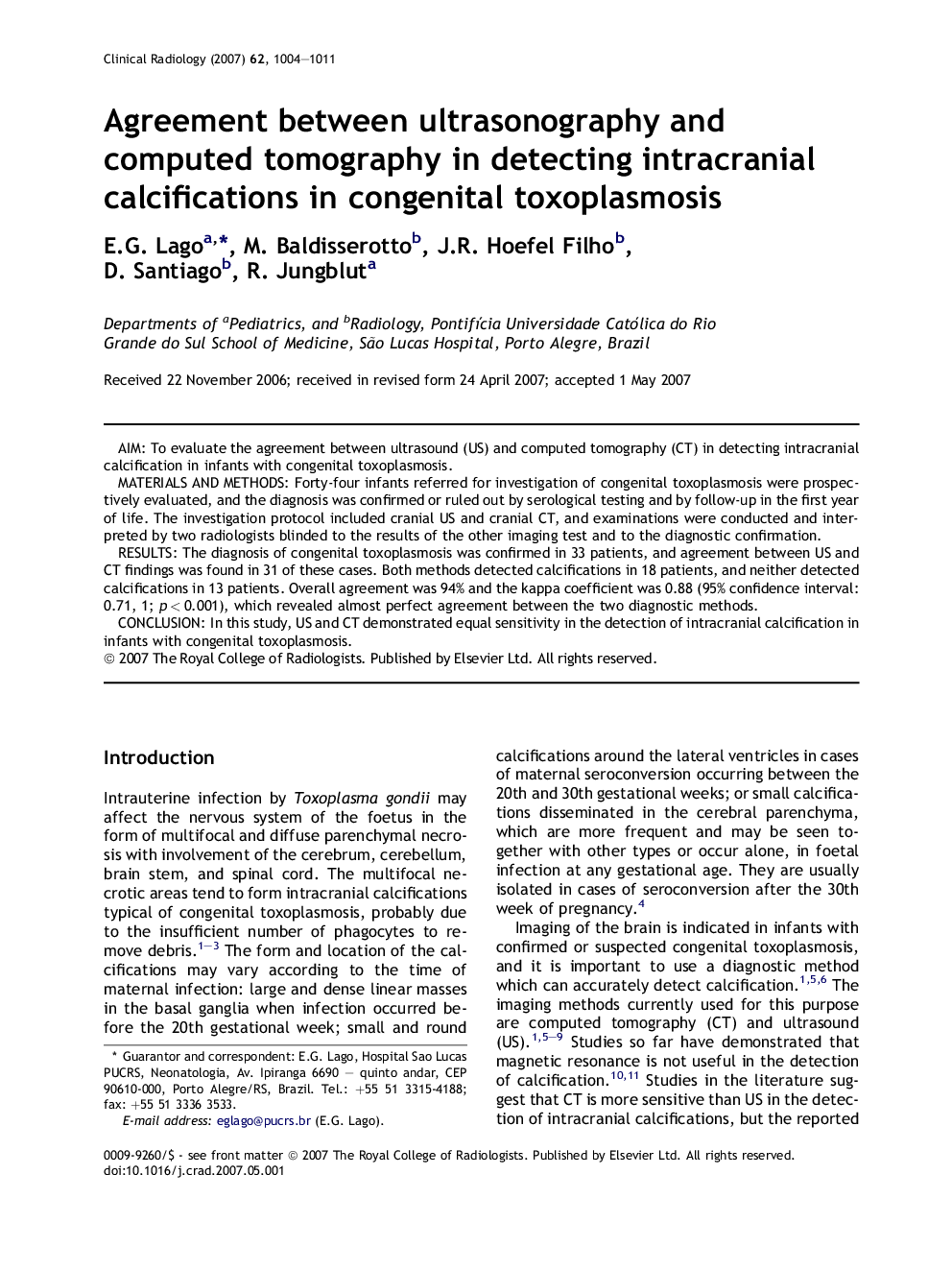| Article ID | Journal | Published Year | Pages | File Type |
|---|---|---|---|---|
| 3983636 | Clinical Radiology | 2007 | 8 Pages |
AimTo evaluate the agreement between ultrasound (US) and computed tomography (CT) in detecting intracranial calcification in infants with congenital toxoplasmosis.Materials and methodsForty-four infants referred for investigation of congenital toxoplasmosis were prospectively evaluated, and the diagnosis was confirmed or ruled out by serological testing and by follow-up in the first year of life. The investigation protocol included cranial US and cranial CT, and examinations were conducted and interpreted by two radiologists blinded to the results of the other imaging test and to the diagnostic confirmation.ResultsThe diagnosis of congenital toxoplasmosis was confirmed in 33 patients, and agreement between US and CT findings was found in 31 of these cases. Both methods detected calcifications in 18 patients, and neither detected calcifications in 13 patients. Overall agreement was 94% and the kappa coefficient was 0.88 (95% confidence interval: 0.71, 1; p < 0.001), which revealed almost perfect agreement between the two diagnostic methods.ConclusionIn this study, US and CT demonstrated equal sensitivity in the detection of intracranial calcification in infants with congenital toxoplasmosis.
